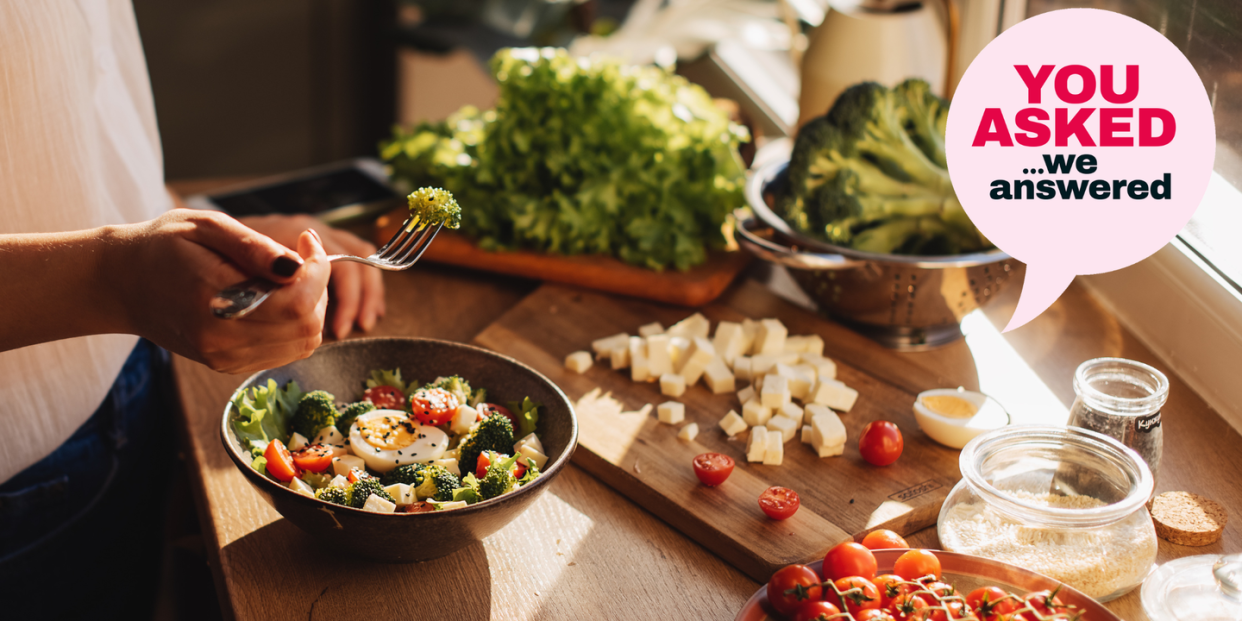Should I change my diet according to my cycle?

While eating chocolate buttons like they're blueberries is a time-honoured PMS salve, nutritional science holds further insights. Dietitian Laura Tilt shares how to temper the effects of your cycle - all month long.
Okay, so the idea of syncing your nutrition with your cycle sounds like extra admin no woman needs. But given you're probably already adapting your social life (duvet, Netflix) and workouts (gentle downward dog over HIIT) depending on your cycle, making simple upgrades to your nutrition might not be the cognitive paperwork you think it is.
First, a quick refresh on the hormonal answer to your iCal. The average cycle lasts 28 days and is made up of two phases. The follicular phase begins on day one of your period; the pituitary gland produces a hormone known as follicle-stimulating hormone (FSH), which stimulates the growth of ovarian follicles in the ovary.
In tandem, oestrogen levels rise, causing the lining of your womb to thicken until ovulation. About midway through your cycle, oestrogen peaks, causing a surge in luteinising hormone. This triggers the release of an egg from the ovary, and ovulation occurs. Post ovulation the luteal phase begins. This is when progesterone levels rise, supporting early pregnancy if the egg is fertilised. If the egg isn't fertilised, progesterone and oestrogen levels fall. This sets your period in motion, and the whole thing begins again.
PMS Saviours
The majority of research has focused on the impact of diet on premenstrual syndrome(PMS): a group of symptoms that includes tender boobs, bloating, headaches and low mood. PMS kicks in post-ovulation and is linked with rising progesterone levels. If you suffer with PMS, several nutrients may offer relief.
In one study, women affected by PMS experienced fewer symptoms when consuming a daily supplement containing between 1g and 2g of essential fatty acids from day 15 to the end of their cycle. Calcium also appears to reduce the severity, with studies finding that combined calcium and vitamin D supplementation (the sunshine vitamin regulates absorption) ease symptoms.
As for your ability to sniff out a Dairy Milk within a 50-foot radius, hormonal fluctuations during the luteal phase are thought to be to blame for food cravings, with studies showing appetite and cravings for sweet and high-calorie foods increase post-ovulation.
Carb-rich foods
One (very pleasing) theory is that carb-rich foods give you a bump in serotonin, which can offset the dip in low mood that occurs around the same time. Eating plenty of high-fibre carbs (wholewheat and rye bread, pulses, brown rice and pasta) may help, by keeping blood sugars and mood on an even keel.
As for when you're on your period, two nutrients are worth considering. Iron is found in the blood, which means it's lost when you lose blood, so levels are at their lowest post-menstruation, with heavy bleeding increasing the risk of anaemia. Red meat is the most readily absorbed source of iron, but non-haem iron (found in plant foods, such as green leafy veg, pulses, tofu and dried fruits) is worth topping up, too, as evidence suggests it can also help reduce PMS.
If you suffer with cramps, evidence shows the anti-inflammatory effects of omega-3 (found in oily fish, walnuts, linseeds and chia) can help by dampening the effects of prostaglandins, chemical messengers that cause your uterus to contract. While a tray bake of salmon and leafy greens may not have quite the appeal of a packet of Hobnobs, it might just be the thing that helps.
Boost your levels post-menstruation with these heavy hitters:
140g steak: 5.5mg (37% RNI)
200glentil bolognese with wholewheat pasta: 6.6mg (45% RNI)
50g iron-fortified bran flakes: 4.8mg (32% RNI)
You Might Also Like


